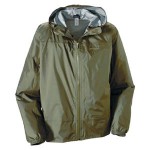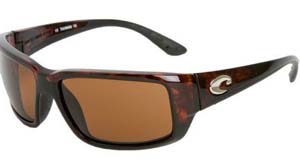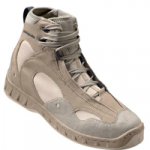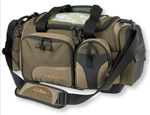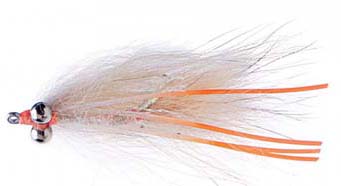What to include when going on a fly fishing trip to the Bahamas.
Passport, meds, cash and sunscreen
For starters, you’ll need an up to date passport, any meds you require and a lot more cash than you usually carry. Nassau, Abacos and Grand Bahama are thoroughly modern, but out in the boonies or out islands there are no ATM’s or banks and most shops only take cash.
Other needs would be sun screen – you can’t OD on this stuff and even if you’re dark skinned, you’ll fry on a Bahamian cloudless sky day and won’t know it’s too late until you get back to your room and shower – could ruin the whole trip. It’s happened!
Hat, buff and Sun-gloves
For a hat choose a 360 rimmed hat with chin-strap and a clip that attaches to you shirt, get a Buff and at least cover your neck, and don’t forget sun-gloves.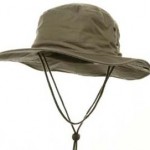
Rain gear
Windy days equal boat spray and then there’s rain. Bring the best lightweight rain jacket and pants you can buy. They will also serve you well as a windbreaker on long hauls.
Clothing
Light khaki colored long pants and long sleeve shirt made of Supplex. If you’re doing a lot of wading, you’ll want more than one pair of each. When wading, tuck the pants into your wading shoes to reduce the drag of the pant leg. Always bring a warm pullover for early morning runs, especially in the winter.
Polarized glasses, hat, sun gloves and high UV buff
Polarized sunglasses are essential for fishing the flats. Bring two pair. My favorite lenses are brown and amber (lowlight). You’ll want a holding strap, lens cleaning cloth, cleaning solution. Again, a 360 rimmed hat with clip to keep it anchored to your shirt. Make sure your Buff is highly UV resistant and use sun gloves for both hands for protection from the blow torch sun.
Wading shoes and neoprene socks
Be sure to break-in any “shoe” before trying to wear them for several days at a time. Great products include Patagonia’s Marlwalker, Simms’ Flats Sneaker and Cabelas’ Bone Sneaker. You’ll need a pair of socks – Simms has a great wading sock. Thin Neoprene socks are sold at most tackle shops and dive shops. Gravel guards will keep you mostly sand proof.
A towel
Always remember to bring a hand-towel. It triple plays a fish slime remover, boat rod protector and drying “stuff” off. BTW, we’re not asking where you got the towel.
A waterproof bag
A waterproof or splash-proof bag is a necessity for those who don’t use a waterproof camera. They’re also needed for extra clothing, extra hat, second pair of polarized glasses, rain jacket and pants and a hook-sharpening file and a pair of pliers, spare reels and other accoutrements. If you’re wading, take the hook-sharpening file and a pair of pliers with you.
Fishing gear
An 8- and 9-weight will do the trick for any bone fish. The fly lines you choose for them must be tropical and preferentially bone fish tapers. Floating and intermediate sinking lines will accommodate the type of presentation for tailing in shallow water or mudding in deeper water. If there’s wind, and there will be, you’ll need that 9-weight, it will better deliver weighted flies. A 7-weight will work if the wind isn’t an issue, but that’s less likely in the winter.
For tips on casting in the wind, stay tuned. We’ll have a Tips & Tactics on that very subject in a few days. It will help considerably.
A good reel with superior drag system is mandatory and a spare spool, or two reels, for bones in the Bahamas are a must. You should have a minimum of 150 yards of backing. Even a small bone will make the drag screech.
Fly lines must be in perfect condition (cleaned and no cracks or signs of damage) – don’t start saving money here! Pre-tie all your leader needs (9- to 12-foot with the option to lengthen with finer diameter tippet material).
A lot of folks won’t mix leader material brands or use mono with flouro. Yes, it’s done by some of the best fly anglers, but if you choose the wrong knots or don’t tie a perfect connection – flouro to mono, it’s break-off time and then all you can say is s%$t! If you’re a little rusty on knot tying, go to your local fly shop and have them tie up your leader needs or simply use tapered leaders from Rio or 3M. Hold your leaders in Zip-Lok bags with two twists on each coil. Along with a couple of tippet spools, a few leaders should be in you fanny pack when wading.
For bigger animals (permit, barracuda, tarpon), pre-tie those leaders as well (minimum of 16-pound class tippet at 10- to 12-feet long) and bring at least a 10-weight or better a 12-wetght, or both, with a reel or reels with a spare spool having at least 250-yards of backing. All in all, at least four rods and reels [two bone fish 8- and 9-weights (a reel with spare spool or two reels) and a 10-weight and 12-weight (a reel with spare spool or two reels)], ready to go fishing.
Flies: Shrimps (several varieties) and crabs (many types) are all crustaceans and the biggest part of bone fishes diet worldwide so most bone fish flies are tied to imitate them. Flies are usually tied on size 4-, 6-, and 8-hooks. Bone fish are down-looking fish with under slung mouths that are designed to feed on the bottom so almost all bone fish flies are tied inverted – the hook is up with no eyes, bead chain eyes or heavier dumbbell eyes. In shallow water 1-foot or less to about 18-inches, bones are at their peak of predation alertness and anything that comes their way that’s unnatural, even a bird’s shadow, will cause them to bolt so an unweighted non-dumbbell fly will land a lot softer. In deeper water, the weighted flies will get you in there water column fast. As a general rule of thumb, choose a fly that mimics the color of the bottom you’re fishing. Better yet, listen to your guide’s suggestion.
For Grand Bahama, your selection of flies should be close to four dozen for a week with permit and tarpon flies the least part of the collection. Feel free to contact Don Reed, our fly tying editor, at Saltwater Fly Tyers. Don’s been to the Bahamas a lot and can put together a real working package for you. Be sure to give Saltwater Fly Tyers good lead time. Or contact a shop that runs trips to the Bahamas on a regular basis.
[information] [/information]



